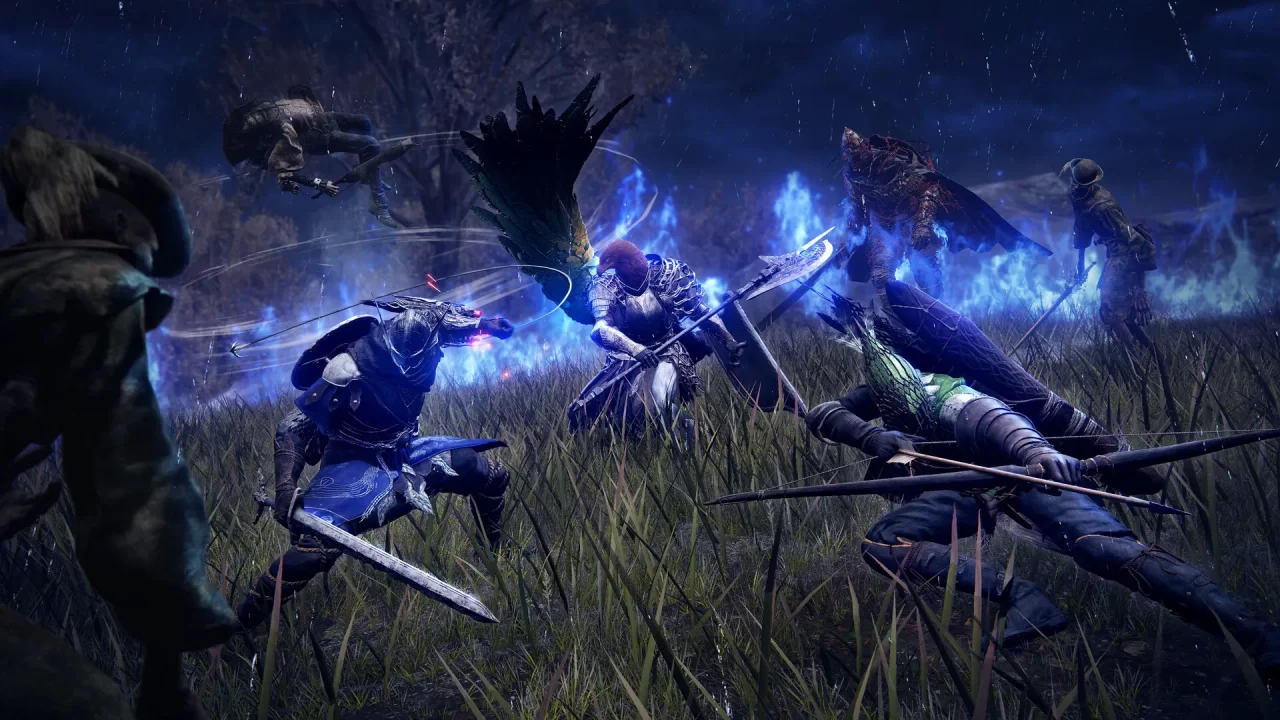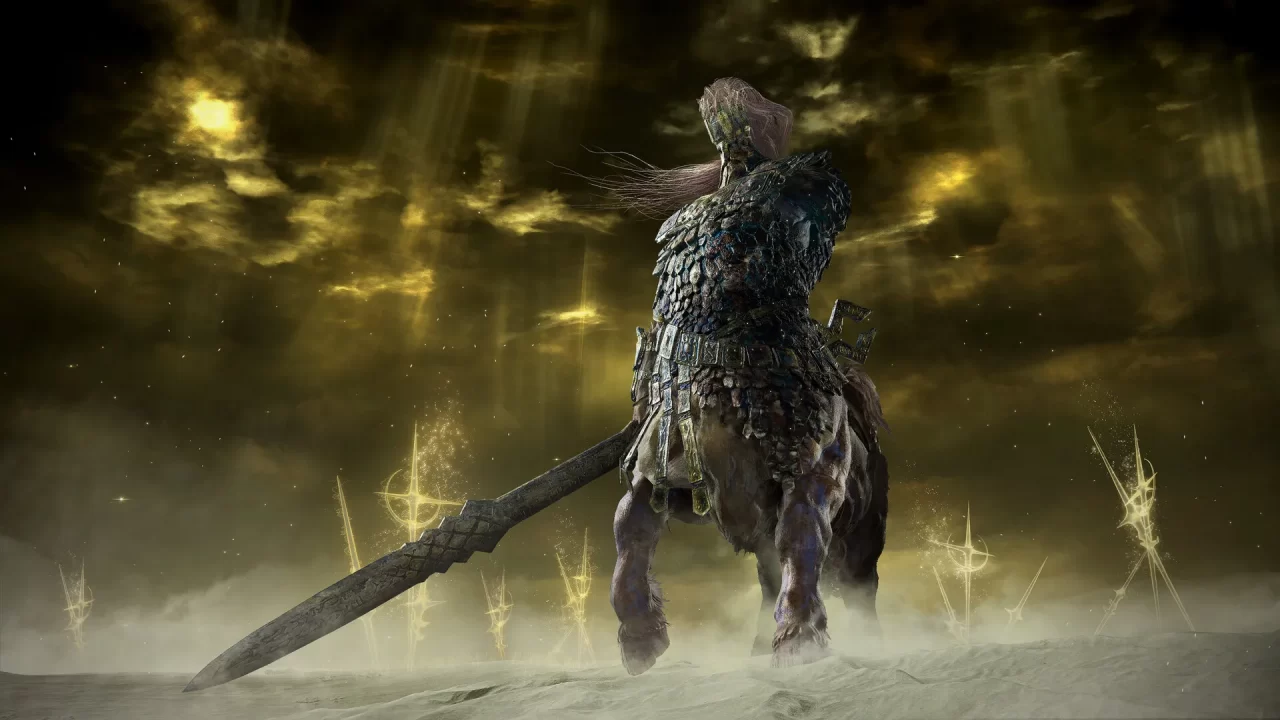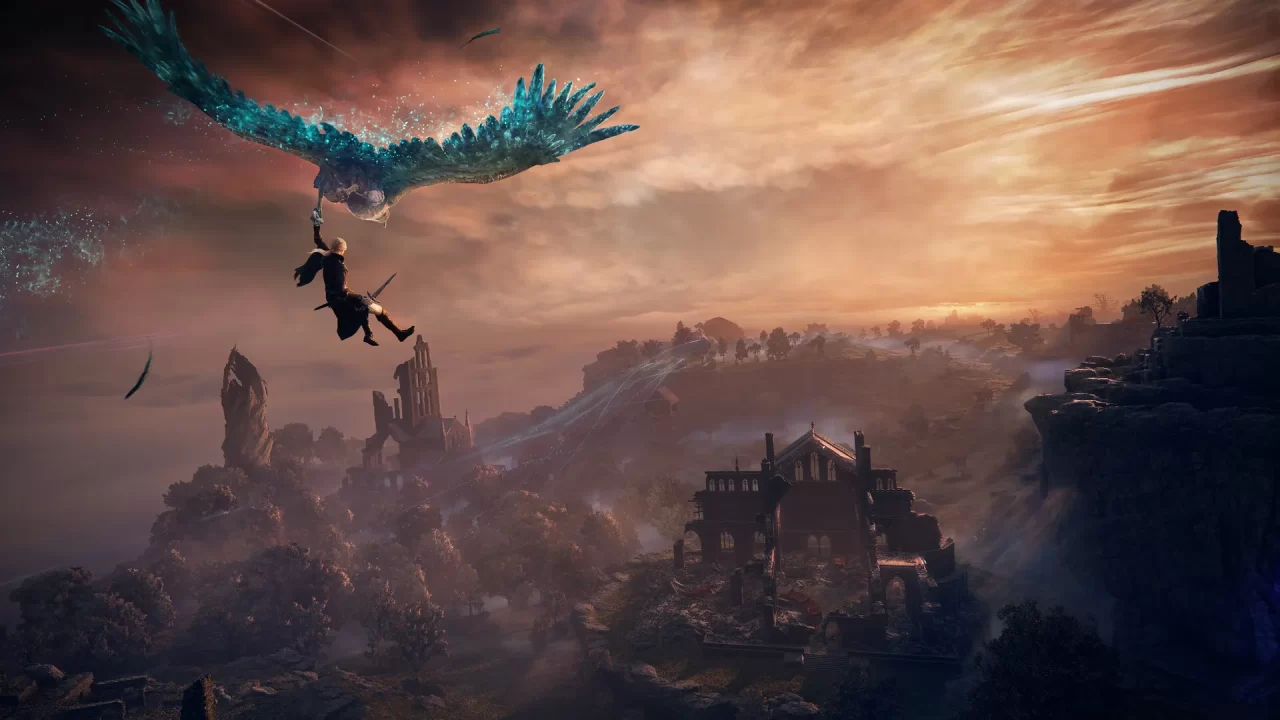At first, playing Elden Ring Nightreign is a lot like teaching.
I know that’s an odd way to start the review, but for the first 15 hours or so, I kept thinking, “This is the most stressful game I’ve ever played.” That feeling drew me back to something I’d heard years before: teachers make roughly 1500 different decisions a day.
I don’t remember where I saw this, but it gets at the stresses and pressures of the job regardless. You have five classes a day with over 100 students, all who have different needs. Everything you say and everything you do matters. You want to get everyone to the same(ish) endpoint, but no day looks the same; no matter how many years you do it, it never gets easy, and true successes feel rare.
That’s exactly how Elden Ring Nightreign felt to me initially. It was fast, it was frenetic, there were so many decisions to make, and every one felt fresh, like it had weight. It was overwhelming, but I felt like I was making progress. I was getting better. However, the repetition of the gameplay loop wears thin eventually, and it feels like I’m teaching the same tired lesson over and over, leaving the good stuff for the last five minutes of class.
If that sounds odd to you, that’s probably because Nightreign is a very different experience from previous Soulsborne titles, where you could explore and take down enemies at your own pace. Nightreign doesn’t give you that luxury. Either by yourself or with a group of three, you select one of (eventually) eight excursions and a character class. When you land on the map, you have three days to explore, grab upgrades, level up, and take down bosses. To start, the whole zone is your oyster, but the explorable area steadily shrinks down to a single point where you fight a boss. Clear that boss to move onto the second day where the map opens back up; rinse, repeat. If you manage to make it through to the final day, you get to take on the extremely challenging “Nightlord” of that excursion.
Runs can take 45 minutes to an hour if you make it to the end because Limveld is chock full of things to explore: churches to upgrade your healing flasks, castles with Crucible Knights give great experience, trolls tossing pots at you (that you should avoid), mines for upgrade materials, and bosses tucked away. There’s no possible way you could hit everything in a given run, so you have to make several choices. Where do we go first? Where do we stop to level up? Do I need a poison weapon? Do we have time to hit that church? Is this weapon better than that weapon? How can I synergize with my team? Can we beat the Fallingstar Beast quickly enough at this level?
Another thing that adds complexity to the decision-making is working with a team. To be clear: yes, you can play Nightreign in single-player, but I don’t recommend it. This game isn’t balanced well for it. Sure, you do more damage, the enemies have lower HP and don’t do as much damage, and occasionally the Nightlords will have fewer mechanics, but this game is absolutely meant to be played with two others. There are too many enemies and too much to deal with in many of the boss fights to handle them well alone.
Still, playing with others brings its own difficulties. Someone really needs to make decisions, and others need to follow. You don’t have time to talk it out. Frankly, that concerns me for the random matchmaking; if you can’t talk in voice or agree on things, a game that is already tough as nails will get even harder, and I suspect people will get very frustrated. The lack of any in-game party chat function or built-in voice can only exacerbate the problem. My advice is to find a couple of friends, jump into voice chat, and figure out a rhythm.
One huge advantage of playing with others is that if your character loses all their health, your allies can revive you by hitting you enough times. If you’re left alone for long enough, though, you’ll “die” and respawn nearby, losing a level. Most importantly, if all three of you “die,” it leads to lost time. At the end of any run, you get currency to buy an equippable “Relic” that gives you passive bonuses, but they’re not any great shakes, so you’re not meaningfully powering up when you lose. It’s the quality of the run that determines how strong you are by the end. Yes, this is a “hardcore” online experience that a slice of the Soulsborne community will enjoy, and it’s certainly not for everyone.
Needless to say, if you don’t like making decisions quickly, if you don’t like managing multiple teammates, if you don’t want that kind of stress, Nightreign is not the game for you. Keep in mind that this game is built with Elden Ring assets, so most of the bosses, outside of a few fun cameos from other FromSoft titles, are from the 2022 RPG, so they’re still boasting some real challenge.
But I’m a glutton for stress, and I thought it was fun to see what each excursion gave me in the early going, to plan out a route, and to make those snap decisions. As time went, though, a lot of the game design started to wear on me. Not because it’s “hard,” but because things started to feel excruciatingly repetitive.
Eventually, you figure out what works for you: your class, the kinds of upgrades you need to win, and what risks you can afford to take. You see the same bosses again and again; the patterns will get easier. You walk through the same encampments over and over, and you recognize which bosses you can take at a given level and which you should pass on. You hope you get the right weapon drops to hit the Nightlord’s weaknesses. Put simply, you find your rhythm and the first two days get pretty easy.
But you know what won’t get easy? Most of those Nightlords. I played with some extremely skilled players, and often they’d already taken down a particular boss, yet it still took us six or seven runs to get a clear. I don’t have a problem with failing against a tough Souls boss, but I do have a problem with spending 45 minutes on repetitive busywork leading up to that same boss again. Even though the bosses are beautifully designed and an excellent challenge, I mostly wanted to win so I didn’t have to do the run again.
Limveld’s level design intensifies this impression. Each excursion uses the same basic layout, seemingly built on a blend of assets from Limgrave and Liurnia from Elden Ring. Sure, churches, encampments, and other locations are randomly generated and can appear in different locations, but the designs are copy-pasted. You can eventually put specific “events” in the map, like a snow area or a rot area, and clearing them often gives good rewards. Still, it’s just a small portion, and there are only five variations. It also means that the music doesn’t really change outside of the Nightlords, and the beauty and splendor of Elden Ring is nowhere to be found in the visual design, though it still looks perfectly fine. Needless to say, no matter how delighted I was by no fall damage and fast running in Nightreign, I got tired of looking at the same stuff for almost 40 hours.
One thing that does help a bit with the repetition is the classes you choose. You can use a well-balanced Wylder, a bow-wielding Ironeye, a magic-casting Recluse, and everything between. Each class has different passive bonuses, ultimate moves, and stat allocations. Weapon drops are determined by which class you’re playing, but the variety of weapons means each class still has a ton of flexibility, especially when paired with party composition and boss strategies. It all works well; you don’t have time to figure out a “build” during a run, but you can coordinate with your team to time ultimate attacks or focus on certain enemies during fights. Essentially, there’s just enough complexity and variety to make each class feel distinct and useful, which helps mitigate some of the tedium.
You might notice that I’ve barely talked about the story, and that’s because there isn’t much here, not in the traditional Soulsborne sense. Since you don’t have time to interact, explore, or read item descriptions, there’s no story while you’re actually “playing” Nightreign. Instead, you find what little there is through quests with different people at the Roundtable Hold. As you play with the different classes, you unlock “Remembrances,” which unravel details about each character class as you complete objectives around the hub or on a mission. These are fine, and there’s a surprising amount of variety in how you complete them. They feel weirdly disconnected from what you’re actually “doing” in the game, though, so they didn’t quite work for me.
Maybe more than any previous Soulsborne title, Elden Ring Nightreign is a game of learning, of trial and error. You run through Limveld again and again, and you figure out which methods work best for you, which places are worth going, and which approach is going to help you be most powerful for the final test. Long before you roll credits, though, you are almost certain to learn these lessons, go through the same tired routines over the same tired plains and landscapes while fighting the same tired enemies just to get wrecked by the final test if the RNG gods don’t favor you. It feels like you’re being forced to learn on someone else’s schedule, and while that works for a little while, eventually you want them to get on with the lesson and deliver some excellent boss fights without the long, repetitive road beforehand.





